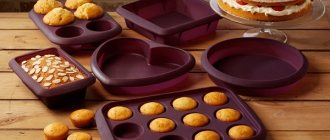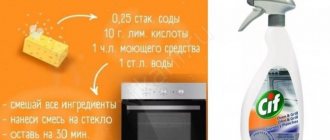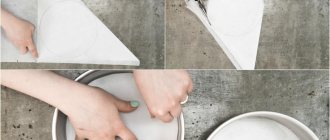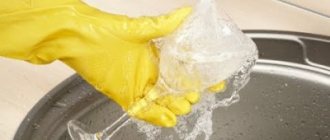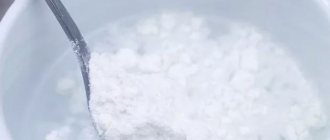Perhaps every novice pastry chef dreams of learning how to bake tall, even sponge cakes: so tall that you can cut them into several layers and immediately assemble the cake. But often not everyone is able to achieve such a result. And it seems like they kneaded the airy dough and preheated the oven, but the sponge cake still doesn’t rise. Are you familiar with this situation? If yes, then let's figure out what went wrong.
As a rule, if you manage to achieve the correct consistency of the dough and if your oven bakes properly, then the reason for the non-rising sponge cake may be hidden in the baking pan, or more precisely in its improper use. Therefore, today I will share with you the basic rules for preparing a mold for baking sponge cakes and tell you in which forms the biscuits turn out the best.
Is it possible to bake pies in glass containers?
Yes, you can bake pies in oven safe glass pans. A striking example of such cookware is the heat-resistant Satoshi molds, which can withstand heating up to 240°.
It is important to understand that glass bakes differently than ceramics and is more like metal. Like dark metal baking sheets, it causes rapid darkening of the bottom and walls, and therefore pies in glass forms always turn out with a dry, crispy brown crust.
What's the difference between metal and glass bakeware?
Aluminum is a good heat conductor
, and therefore baked goods cook in it quickly and turn out golden brown. Glass is a heat insulator; it heats up slowly but retains heat longer.
Pies in glass turn out as rosy as those in metal. And the most important thing you should know about baking in glass containers is that the outer part of the pie always cooks faster than the inside. To ensure even cooking of the dessert, you will have to reduce the temperature by 5° and check the readiness of the delicacy 10 minutes before the time prescribed in the recipe. Another nuance is that pies in glass containers may sag and turn out not as fluffy as in metal baking sheets, and therefore it is recommended to add baking powder to the dough.
It is also recommended to use heat-resistant glass forms for sour desserts. The inert material does not react with food and is the most hygienic material for cooking. It is worth noting that glass containers make not only excellent pies, but also toasted homemade bread. Just know that baking in glass will always be lower than in other materials.
Which oven dish is better to buy from heat-resistant glass or ceramic?
Glass bakes sponges with crispy, dark sides and is not the best choice for pies with fruit fillings and a lot of sugar. In the first case, the crust will cook much faster than the filling, and in the second there is a high risk of burning. To prepare fruit and sugar desserts, it is better to use ceramic dishes. Heat-resistant ceramic pans bake pies evenly, and their crusts and fillings are evenly baked. Moreover, the biscuits turn out moist and the crusts are golden brown, but not dry.
If you're a fan of moist baked goods, bake in ceramics. If you like dry baked goods with crispy, gilded sides, your choice is metal or glass.
Do I need to grease glass baking dishes in the oven?
So, the most frequently asked question regarding this type of cookware: do I need to grease glass baking dishes with oil? Glassware and dark metal pans will cause the edges to bake quickly and even burn, so be sure to grease them with softened butter or cooking spray. Do this even if this nuance is not indicated in the recipe.
Grease your ovenproof glass pan a couple of minutes before adding the batter. Otherwise, the oil will have enough time to drain from the sides to the bottom and leave them completely bare.
How to prevent the cake from sticking to the bottom and walls of glass dishes?
The easiest and surest way: grease with a mixture of butter and flour. Treat the inside of a heat-resistant glass dish with margarine or butter. Then line the container with parchment paper and grease it with oil. At the final stage of preparation, dust the greased pan with flour. Shake the bowl so that the flour evenly coats the entire interior.
Is it possible to place a heat-resistant glass dish in a hot oven?
Even the most heat-resistant and strong glass remains just glass that is afraid of temperature shock. Glassware can withstand heating up to 240 degrees and can be stored in the freezer at -40°, but a sudden temperature change will cause it to burst. Therefore, baking dishes made of heat-resistant glass can be placed in a cold or slightly heated oven. The cookware and oven must heat up at the same time. Glass dishes should not be placed in a hot oven! Just like you shouldn’t place hot dishes on a cold surface. Wait until the container has cooled completely before starting to wash it with warm soapy water.
You can also place the glass pan on a metal tray rather than on a wire rack, which will increase the thermal conductivity of the pan without the risk of breakage. In this case, you may have to increase the baking time by 5-10 minutes.
In the question of whether it is possible to put glassware in a hot oven, what matters more is not the temperature of the oven itself, but how hot the grate is. You cannot place glass on a hot metal rack, but you can place dishes on a cold rack or a metal pan in a hot oven. If you preheat the oven, remove the metal rack and still avoid extreme heat.
Is it better to bake pies in the upper or lower part of the oven?
On the top shelf of the oven, the bottom takes longer to bake. The dough has time to soak in the juice of the fruit and gets wet, which prevents you from getting a crispy, browned bottom. But the top of the pie quickly turns brown.
On the bottom shelf, the dishes receive more heat, and therefore the base of the baked goods is dry and well baked. To ensure success, place a glass bowl on a dark metal baking sheet so your cake will never have a soggy bottom.
Wet bottom of fruit pie - how to avoid?
The faster the heat is transferred, the less likely it is that the bottom of the cake will become soggy. Follow our advice about baking desserts on the lower rack of the oven on a metal baking sheet. Also, never put raw fruit in the dough. Boil or fry them first to evaporate excess water. Be sure to sprinkle the bottom of the pan with flour, which will absorb excess liquid.
Here are 4 pastry chef tips for keeping your fruit pie crust crispy:
- For fruit pies, bake the crust separately from the filling.
- Pre-boil or fry vegetables/fruits that contain a lot of water.
- Brush the pie crust with unbeaten egg white and bake for 5 minutes. The egg white forms an impermeable layer on top of the dough.
- Dust the bottom of the pie with flour, breadcrumbs or ground almonds to absorb excess liquid while cooking.
How to remove the finished pie from a glass mold?
If you baked the pie correctly, with a well-browned bottom crust, and pre-greased the pan with butter and flour, you should be able to take it out without any problems. If the dough bursts and the fruit filling leaks onto the unprotected bottom, it will be difficult to remove the dessert. To avoid this problem, use parchment paper or a special removable baking ring. In any case, wait until the container has cooled down and only then begin to act.
If you can't remove the cake, serve it directly in the pan. A small knife with serrated blades that easily cuts through the crispy puff pastry will help you get perfect pieces. Start cutting with one small sample. Removing a small piece will allow you to assess the situation - the degree of moisture of the filling and the degree of roasting of the bottom. The freed up space in the pan will allow you to cut the remaining pie into perfect pieces. It is very important to use a sharp serrated knife and run it several times to accurately cut the base of the cake.
To summarize: is it possible to bake pies in glass dishes in the oven?
Glass pans take time to heat evenly, but are ideal for baking crispy, browned biscuits. And although metal is the best conductor of heat, clear glass allows radiant energy to pass through, making dark crusts bake much faster. To make baking a success, reduce the temperature in the oven by 5 degrees and the baking time by 10 minutes.
You can always buy baking dishes in the oven at the Regular Sales Store at competitive prices.
Not so long ago, microwave cookware made of glass that can withstand especially high temperatures has become firmly established in everyday use. Heat-resistant glass can withstand heating up to 300°C or more. Since the temperature effect in a microwave oven is much higher, you don’t have to worry when placing a dish in a glass dish in a gas or electric oven.
The advantages of using heat-resistant glassware are:
- Thanks to the transparent walls, the housewife can observe the cooking process. As a result, the dish will not burn, but will not remain damp;
But there are also some disadvantages of such dishes:
- glass is a fragile material, so even a not very strong blow or fall from a height can cause the dishes to break;
- glass does not tolerate sudden temperature changes very well.
The second drawback of the cookware is related to some points that need to be taken into account when using it.
Rules for using glassware
Since glass does not tolerate strong temperature changes, heating and cooling must be gradual. You can use microwave-safe dishes, but you need to place the dish in a cold or, at least, slightly heated oven. It is also strictly forbidden to pour cold tap water into a hot mold. After cooking, it is advisable not to take out the pan immediately; it is better to wait about 10 minutes. It is also not recommended to handle the pan with wet gloves or place a hot pan taken out of the oven on a wet table. Glassware can also be used on the stove, but you must use a flame breaker. Uneven heating can cause cookware to crack.
How to choose quality cookware
Be sure to carefully consider the issue of choosing heat-resistant glassware. The surface of the bottom and walls should be smooth, there should be no chips, roughness or tiny air bubbles embedded in it. The slightest crack may cause the mold to simply crack during cooking. Also, the glass should not be cloudy. When purchasing, pay attention to the thickness of the walls. The larger it is, the more evenly the mold warms up and the better it retains heat. As a result, the food turns out more tasty and aromatic, and baked goods rise very well.
By the way, not all glassware is considered heat-resistant. The manufacturer must indicate on the label that the product can be used in microwaves and ovens.
So, microwave safe glassware is oven safe. Just don’t forget about the basic rules, and then the heat-resistant glass pan will serve you for many years without any problems, and you can enjoy very tasty and healthy dishes!
Tips for preparing the form
Confectionery professionals are confident that several proven recommendations on how to prepare a baking dish will help even novice cooks prepare a delicious cake or pie to order.
Deep
>
To prevent the dough from sticking to the bottom and walls of a deep container, they should be covered with parchment. The paper should lie flat so as not to deform the edges of the future culinary product. You can lay the parchment evenly as follows:
- Lubricate the surfaces from the inside with oil;
- place the container on paper, outline its outline with a pencil;
- cut out the drawn circle and place it on the bottom;
- take a thread or string and use it to measure the circumference of the dishes;
- Use another piece of thread to measure the height of the wall;
- Mark the measured length and height on baking paper;
- Draw a rectangle using the marks and cut it out. You will get a ribbon;
- Place the cut strip on the inner edges.
Do I need to grease the biscuit pan?
When baking a sponge cake, especially a classic one, you should absolutely not lubricate the pan with anything.
For some reason, there is an opinion among many housewives and novice confectioners that the biscuit pan must be greased with something. Perhaps many were taught this “life hack” by their mothers and grandmothers. But I hasten to dispel this myth. Remember: when baking a sponge cake, especially a classic one (eggs + sugar + flour), you absolutely cannot lubricate the pan with anything.
Why? It's simple. Imagine a rock climber climbing up a mountain. If the mountain is slippery, then the probability of reaching its top is almost zero. At the same time, when the surface of the mountain is dry, it is much easier to climb up. The biscuit dough is a climber that climbs up the sides of the mold. That’s why, in order for the sponge cake to turn out tall, you need to leave the sides of the mold clean and dry.
Also, many people mistakenly believe that if the mold is not lubricated with anything, the biscuit will stick and it will not be possible to remove it from the mold. Actually this is not true. The biscuit dough will indeed catch on the walls of the mold, but you can easily remove the biscuit from the mold: just run a thin, sharp knife along the edges of the mold.
Speaking of baking dishes. On store shelves you can find a huge number of baking dishes made from a variety of materials. I suggest you figure out what they are intended for and how to use them correctly.
- Solid metal molds
Such forms are usually used for baking tarts and jellied pies with a shortcrust pastry base. When preparing sponge cake, it is better to line the bottom of such forms with non-stick parchment. In order to remove the finished biscuit from the mold, just walk along the edges of the mold with a thin, sharp knife and carefully remove the parchment.
When choosing such forms, give preference to models made of dense stainless steel with a non-stick coating.
- Split metal molds
Such forms are quite convenient for making not only biscuits, but also pies, cheesecakes, and muffins. Since the bottom of these pans is removable, it is not necessary to line it with parchment, especially if you purchase a high-quality model with a non-stick coating.
- Metal ring cutters
If you want to feel like a professional pastry chef, then pay attention to metal cutting rings. These pans do not have a bottom, so when baking biscuits, wrap the bottom of the pan with foil. There is no need to lubricate such rings or use parchment. To remove the product, just run a sharp, thin knife along the edges of the mold and remove the foil.
Also on store shelves there are sliding molds that allow you to adjust the diameter of the finished product. This means that you don’t have to purchase many shapes of different sizes, because one such ring can replace them. Economical and practical!
- Silicone forms
Increasingly, silicone molds can be found on sale. They are available in various sizes, colors and shapes. Such forms allow you to turn any fantasy into reality and prepare dessert in the most unusual form. They are typically used to make mousse cakes and fancy cupcakes.
A huge advantage of silicone molds is their ability to withstand very high and low temperatures. Finished products are easily removed from such molds. Nothing sticks to them, they do not require greasing and the use of parchment or foil. The only drawback is that, as a rule, standard round silicone molds are not very tall, since silicone is a soft material and does not always keep its original shape.
How to cook in silicone molds: step-by-step instructions
Before the first preparation, the container is thoroughly washed using the usual detergent and dried. It is not recommended to use towels for this, as they may leave small particles of dust and lint on the surface.
The maximum temperature recommended by the manufacturer is indicated on the packaging. Exceeding is not recommended, as this will significantly shorten the life of the product. For the first time, be sure to lubricate everything with fat, and in the future this can be done optionally. In limited quantities it will not affect the nutritional value of the product. Add the remaining ingredients to the dough and distribute 2/3 into containers.
The workpiece is placed in a preheated oven, and the degree of readiness is checked using a wooden stick or toothpick. Do not allow the material to come into contact with fire or hot stove walls.
Significant advantages of glass baking dishes include:
- Absolute inertness in contact with products and environmental safety. Considering these qualities, you can not only let the prepared dish cool in the form, but also serve it to the table in this form
- Possibility of long-term storage of the remaining dish in the refrigerator directly in the form - glass perfectly preserves the taste and aroma of the dish without distorting it
- To obtain a crispy and aromatic crust, you can bake the dish in a mold under a lid or foil. And if you do not immediately remove the foil, then before serving the dish will look as if it had just been taken out of the oven
- The thick walls of the glass form will not allow the dish to cool for a long time, since glass is a poor heat conductor
- The transparency of the shape allows you to monitor the preparation of the dish through the walls, without even opening the oven door
- You don’t have to transfer the treat from the mold to the dish before serving - you can always use the mold itself as an original serving item
The choice of glass baking dishes, as well as cookware in general, is very diverse - this also makes it possible to find an option that is suitable specifically for your oven. Square and rectangular, oval and round, with and without lids - a variety of baking dishes for the most delicious dishes and a variety of products will help even inexperienced cooks prepare a real masterpiece and surprise guests. The main condition is to follow simple recommendations, because glassware belongs to the segment of rather fragile kitchen utensils.
What is the best way to grease a baking dish?
As mentioned above, when preparing a sponge cake, the mold should not be greased. But when baking pies and cupcakes in metal forms, this is necessary. The thing is that when preparing cupcakes and pies, we do not strive to get a high-quality product. Also, such baked goods usually contain baking soda or baking powder, which fill the dough with air bubbles and help it rise.
How to grease the baking dish:
- A thin layer of odorless vegetable oil
- Softened butter
- Coconut oil
As you can see, learning how to bake tall biscuits is not that difficult. It is enough to dispel some culinary stereotypes and choose the right baking dish.
Ceramic forms
Ceramic molds are quite expensive, but they are durable, beautiful and safe.
Pros of ceramic molds
- they have thick walls, which means uniform and gradual heating and slow cooling;
- you can cook not only baked goods in them, but also soufflés, various desserts, casseroles, vegetables, meat;
- Thanks to the porous structure of the ceramic, baked goods are baked evenly, and meat and vegetables simmer in their own juices, retaining their beneficial properties;
- Ceramic molds are easy to care for;
- ceramics are safe for health and do not cause allergic reactions;
- they are beautiful and food can be served in the form.
Disadvantages of ceramic molds
- they do not tolerate temperature changes: you cannot put a ceramic mold in a preheated oven, it may crack. It is best to place it in a cold or slightly warm oven;
- such forms are heavy and bulky, they require space in the kitchen;
- they must be handled carefully to prevent chips and cracks;
- If the pan is not glazed, it will absorb odors and grease.
How to care for ceramic molds
- Ceramic dishes should be washed with a soft sponge and dishwashing detergent or soap;
- Ceramic molds cannot be washed in the dishwasher;
- Do not put cold foods into a heated ceramic dish and vice versa;
- Do not place a ceramic mold in a preheated oven;
- Before baking vegetables and meat, the pan can be immersed in cold water for 10 minutes. Chefs say that this will allow the pan to be saturated with water, and during baking it will release excess moisture to the dish - it will become juicy and will not burn. The main thing is that after this, let the dishes warm up to room temperature so that they do not crack in the oven.
How to choose ceramic molds
- price: high-quality ceramics are not cheap;
- inspect the dishes in a bright light: there should be no chips or cracks on them;
- run your hand over the shape - it should be smooth and even.
